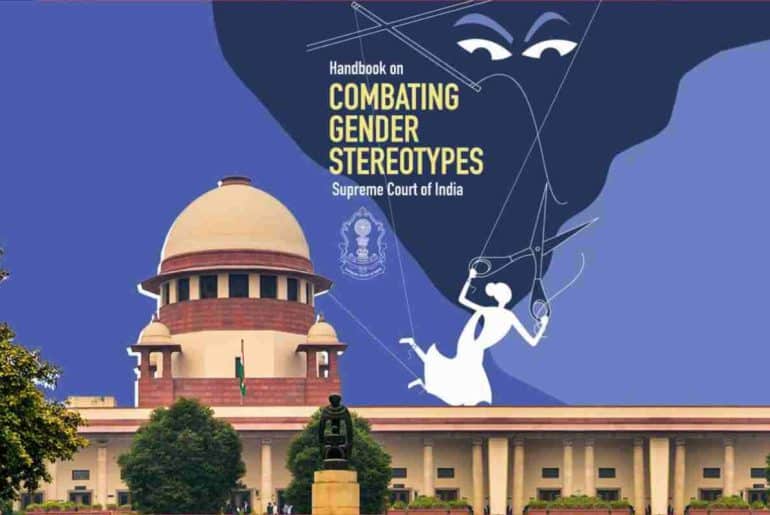The Supreme Court of India recently released a handbook that deals with countering harmful language used in court that fosters stereotypes against women.
The language spoken and accepted in court may not directly influence the outcome of a plea, but it serves as a significant indicator of the values upheld and endorsed by a country. Taking a step towards countering inappropriate and harmful language used against women and gender minorities, the Supreme Court recently issued a 30-page handbook detailing alternative and preferred phrases to be used in legal matters.
(…) the language a judge uses reflects not only their interpretation of the law but their perception of society as well.” -Chief Justice Chandrachud
The handbook tries to eliminate some disdainful language that promotes stereotypes. Some of the identified phrases include ‘career woman’, ‘obedient wife’ and ‘chaste woman’. Another stereotype that the handbook aims to do away with is the idea that women are inherently overly emotional and thus incapacitated to make decisions. It also acknowledges that assumptions made about women’s characters depending on their sexual history and clothing preferences tamper with the judicial assessment of sexual violence cases as they diminish the importance of consent in sexual relationships.
The handbook also wishes to implement the use of more dignified language towards the LGBTQIA+ community. Moving forward, ‘sex assigned at birth’ is stated to be the preferred phrase in place of ‘biological sex’.
When announcing the publication of this handbook in court, CJI D.Y. Chandrachud said that he hoped this would mark a milestone in the journey towards a more equitable society.
Implementation of measures like this one, especially by a nation’s highest authorities, is crucial for driving a fundamental transformation in how women and gender minorities are perceived within a country. Such initiatives not only signal a commitment to gender equality but also play a major role in determining societal norms in the long run.
By challenging these long-existing biases, the Supreme Court of India has contributed to a broader cultural shift that recognizes and respects the dignity and rights of women. Hopefully, there is potential in this handbook to inspire change not only within the legal system but also in society as a whole.
Read also: Handbook on Combating Gender Stereotypes – SC
Featured image credits: Boom Live
Arshiya Pathania


